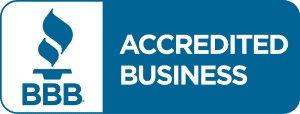When it comes to managing a successful business, having a clear understanding of your company’s financial health and performance is essential. Financial reports are powerful tools that provide valuable insights into your business’s financial standing.
However, these reports can often seem complex and overwhelming to those unfamiliar with accounting practices. Fear not! In this blog post, we’ll demystify three critical financial reports: Balance Sheets, Income Statements, and Cash Flow Statements. By the end, you’ll have a newfound appreciation for these reports and how they can guide your business toward prosperity.
Balance Sheets

The Balance Sheet, also known as the Statement of Financial Position, offers a snapshot of your company’s financial position at a specific point in time. It reflects what your business owns (assets), what it owes (liabilities), and the remaining value for the owners (equity). The equation is simple: Assets = Liabilities + Equity.
Assets are tangible and intangible resources owned by the business, such as cash, accounts receivable, inventory, and property. Liabilities, on the other hand, represent debts and obligations, including accounts payable, loans, and accrued expenses. Equity shows the net worth of the business, calculated as the difference between assets and liabilities.
Understanding your balance sheet can shed light on your company’s liquidity, solvency, and overall financial stability. It allows you to see if you have enough resources to cover your debts and obligations, assess your capital structure, and make informed decisions about financing and investments.
Income Statements

The Income Statement, also called the Profit and Loss (P&L) Statement, showcases your business’s financial performance over a specific period, typically monthly, quarterly, or annually. It presents a summary of revenue earned, expenses incurred, and the resulting net profit or loss. The formula is simple: Revenue – Expenses = Net Income.
Revenue represents the total sales or income generated by your business through its products or services. On the other side, expenses encompass the costs incurred to operate the business, including rent, salaries, utilities, and other overheads.
Analyzing your Income Statement helps you assess your business’s profitability and identify trends in revenue and expenses. This crucial financial report guides you in making informed decisions to increase profits, optimize expenses, and improve overall financial performance.
Cash Flow Statements
The Cash Flow Statement offers a detailed analysis of the cash inflows and outflows within your business during a specific period. It is divided into three sections: Operating Activities, Investing Activities, and Financing Activities.
Operating Activities involve the cash flow resulting from your core business operations, such as revenue receipts and payments to suppliers and employees. Investing Activities represent cash flow related to investments in assets, like purchasing or selling equipment or other businesses. Financing Activities encompass cash flow from transactions with your company’s investors and creditors, such as issuing stocks, repurchasing shares, or obtaining loans.
A Cash Flow Statement provides insights into your business’s liquidity and ability to generate cash. It helps you identify potential cash flow issues, plan for major expenses or investments, and assess your ability to meet financial obligations.
The Power of Financial Reports: Putting it All Together
Now that we’ve demystified these essential financial reports, let’s understand how they work together to paint a comprehensive picture of your business’s financial health and performance.
Imagine you’re a business owner reviewing your company’s financial reports. The Balance Sheet indicates a healthy amount of cash and accounts receivable, and the total value of your assets exceeds your liabilities, reflecting positive equity. This demonstrates that your business is financially stable and has the potential for growth.
Next, you turn to the Income Statement. The revenue shows a consistent upward trend, while expenses have been managed effectively, resulting in a healthy net profit. This signifies that your business is operating efficiently and generating profits.
Finally, you examine the Cash Flow Statement. It reveals that your business has a positive cash flow from operating activities, indicating that your core business operations are generating sufficient cash. Additionally, you notice that you recently invested in new equipment, financed by a loan. This means you are strategically investing in your company’s growth while maintaining a stable cash flow position.
By interpreting these financial reports collectively, you gain a deep understanding of your business’s financial health. This knowledge empowers you to make informed decisions, allocate resources wisely, and strategize for future growth and success.
Figuring it Out
Financial reports are more than just a collection of numbers; they are powerful tools that provide valuable insights into your business’s financial well-being and performance. Understanding your Balance Sheets, Income Statements, and Cash Flow Statements enables you to make informed decisions, address potential issues, and steer your business toward long-term prosperity. With this newfound clarity, you can confidently navigate the financial landscape and propel your business to new heights of success.







